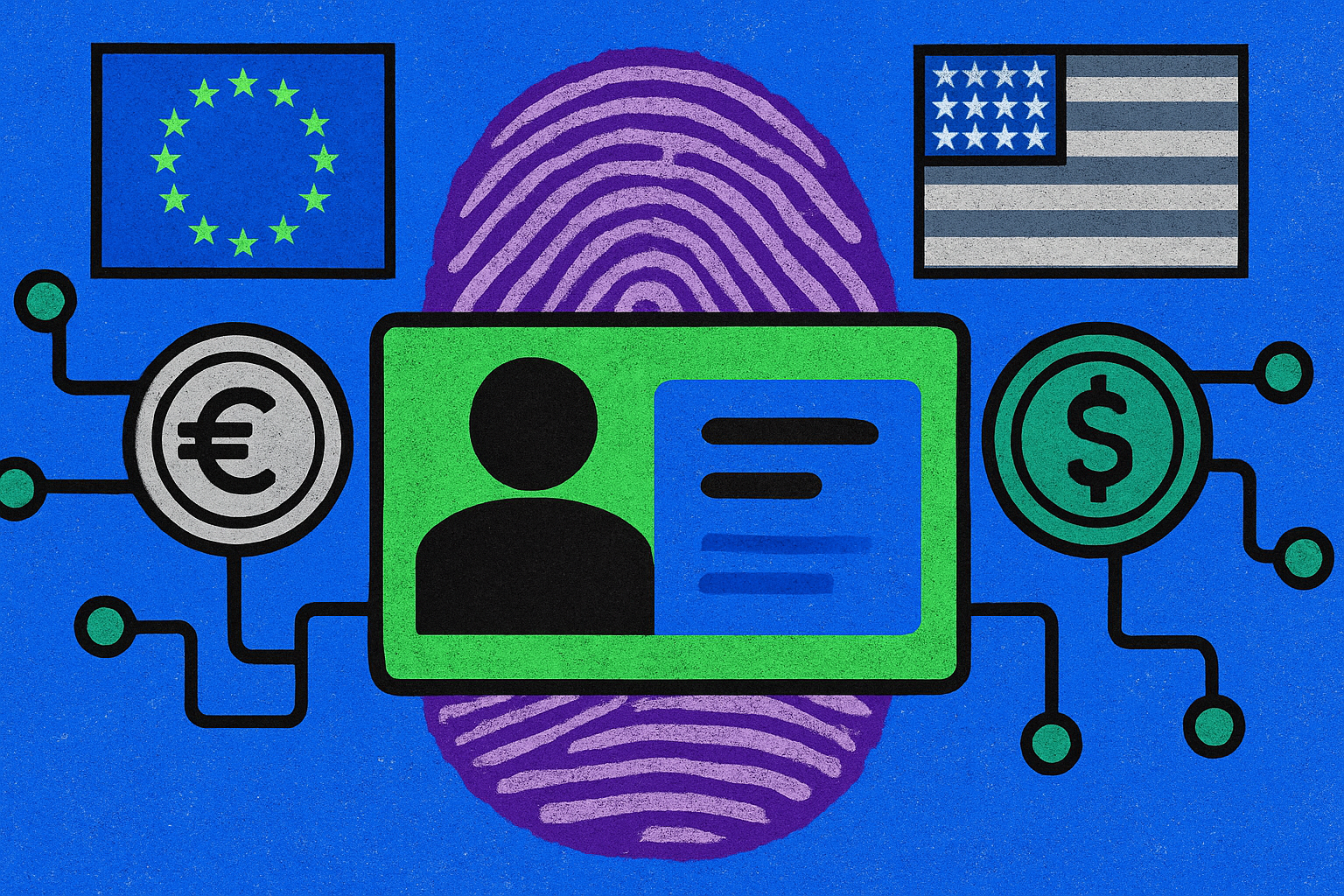
Stablecoin regulation has entered a new era in 2025, as both the United States and European Union have enacted sweeping frameworks that redefine compliance, licensing, and operational standards. The U. S. GENIUS Act and the EU’s Markets in Crypto-Assets Regulation (MiCA) are now the benchmarks for global stablecoin oversight, forcing issuers to adapt or risk exclusion from two of the world’s largest digital asset markets.

The GENIUS Act: U. S. Sets a New Compliance Standard
Signed into law on July 18,2025, the GENIUS Act is the first comprehensive federal law targeting stablecoins in the United States. It delivers long-awaited regulatory clarity for issuers, merchants, and consumers by establishing strict eligibility and operational criteria for what it calls “Permitted Payment Stablecoin Issuers” (PPSIs). Only subsidiaries of insured depository institutions, OCC-supervised nonbanks, or state-chartered entities meeting rigorous federal standards can issue payment stablecoins.
The GENIUS Act mandates a 1: 1 reserve backing for all outstanding stablecoins, limited to highly liquid assets such as U. S. dollars or short-term Treasuries. Transparency is non-negotiable: monthly public disclosures and regular third-party audits are now standard requirements. Issuers are also classified as financial institutions under the Bank Secrecy Act, subjecting them to robust anti-money laundering (AML) and sanctions compliance obligations.
This paradigm shift comes with an 18-month transition period, giving existing issuers until January 18,2027 to align with new rules. The intent? To shore up consumer protection while integrating stablecoins into traditional finance without stifling innovation. For a deeper dive into how these changes affect market participants, see our in-depth analysis.
MiCA: Europe’s Unified Approach to Stablecoin Oversight
The EU’s MiCA regulation, effective since June 30,2024, has already catalyzed dramatic shifts within Europe’s digital asset sector. Under MiCA, all stablecoin issuers must secure authorization from National Competent Authorities (NCAs), adhere to direct supervision by regulators, and maintain liquid reserves covering 100% of circulating supply. Quarterly audited reports are mandatory to ensure ongoing transparency.
A unique feature is MiCA’s transaction threshold: when daily transactions exceed €200 million, enhanced capital reserve rules automatically kick in. This dynamic mechanism aims to preempt systemic risks while supporting responsible innovation across member states.
The European Securities and Markets Authority (ESMA) has set a hard deadline, January 31,2025, for exchanges and custodians to restrict non-MiCA-compliant stablecoins within the EU zone. Only “sell-only” operations will be permitted through Q1 2025 for legacy tokens that fail compliance checks.
Market Response: Issuers Pivot or Exit
The regulatory race between the U. S. and EU has forced swift adaptation among major stablecoin issuers:
- Tether announced plans for USAT, a new U. S. -compliant stablecoin designed specifically around GENIUS Act requirements, to preserve access for American users.
- Major exchanges across Europe delisted non-MiCA-compliant tokens like USDT during summer 2025; only fully compliant coins such as USDC and EURC remain widely available.
- A surge in licensing applications, both in Washington D. C. and Brussels, signals that leading fintechs recognize regulatory alignment as table stakes for future growth.
This rapid market realignment demonstrates that robust regulatory frameworks do not necessarily dampen innovation, they simply raise the bar for transparency and risk management across the ecosystem.
For stablecoin issuers, the new regulatory reality means that compliance is no longer a competitive edge, it’s a minimum requirement for survival in core markets. The GENIUS Act and MiCA have created a transatlantic playbook that is already shaping licensing, product design, and operational strategy for 2025 and beyond. The days of regulatory arbitrage are fading fast as both frameworks converge on similar pillars: full reserve backing, real-time transparency, and direct regulator oversight.
What’s striking is how these regimes are influencing each other. U. S. lawmakers have borrowed elements from MiCA’s risk-based approach, while EU regulators are closely tracking the GENIUS Act’s emphasis on AML and consumer protection. This cross-pollination is accelerating the drive toward global standards, an unprecedented shift in digital asset governance.
Strategic Implications for Legal Teams and Industry Leaders
Legal professionals and compliance officers now face a dual challenge: navigating overlapping requirements without falling out of step with either jurisdiction. For multinationals, this means investing in dynamic compliance architectures capable of meeting both U. S. and EU standards simultaneously. The cost of non-compliance has never been higher; delisting events and market access restrictions can erase years of brand equity overnight.
On the strategic front, some issuers are leveraging this moment to differentiate through transparency, offering real-time reserve attestations or integrating automated compliance checks into their core infrastructure. Others are doubling down on geographic specialization, focusing on either the U. S. or EU to simplify operational risk.
For further insights into how these laws impact your compliance roadmap, and what steps your firm should take next, see our comprehensive breakdown: GENIUS Act vs MiCA: Comparing US and EU Stablecoin Regulatory Frameworks for 2025.
Looking Ahead: Global Ripple Effects
The ripple effects of GENIUS Act stablecoin compliance and MiCA stablecoin regulation extend far beyond Washington D. C. or Brussels. Jurisdictions from Hong Kong to the UAE are rapidly benchmarking their own frameworks against these new gold standards, spurring a second wave of global harmonization efforts.
Stablecoin reserve rules in 2025 are now more than just technicalities, they are the linchpin of trust for institutions considering large-scale adoption. As more financial institutions enter the space, expect heightened demand for third-party audits, real-time reporting dashboards, and robust legal opinions covering cross-border issuance.
Ultimately, the winners in this new era will be those who can adapt at pace, marrying regulatory rigor with technological agility. As regulatory clarity deepens liquidity pools and invites institutional capital, stablecoins may finally realize their promise as frictionless bridges between traditional finance and Web3 ecosystems.




